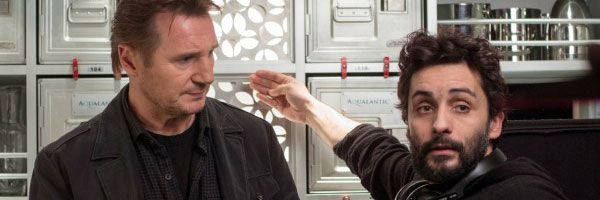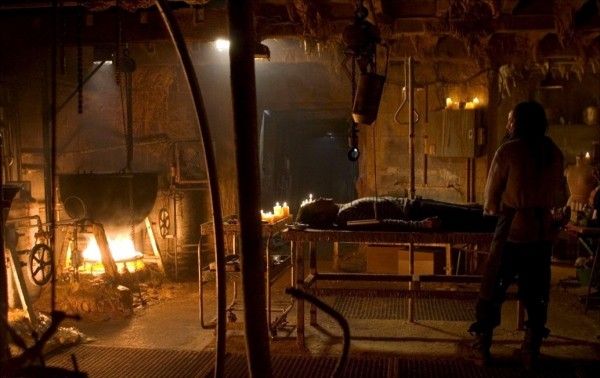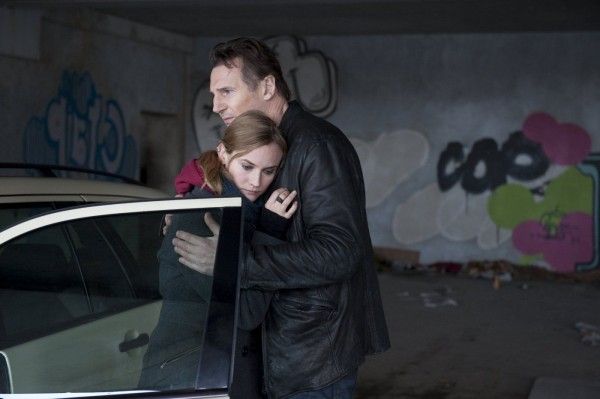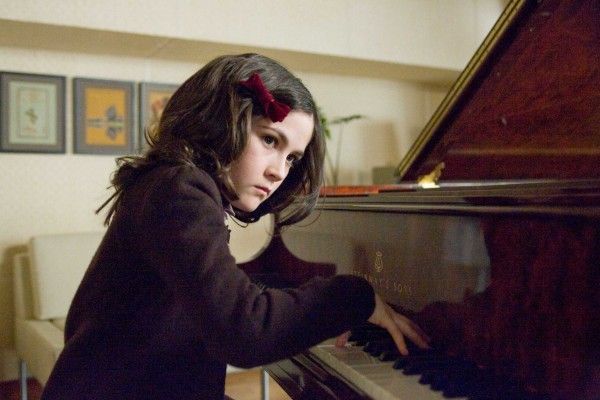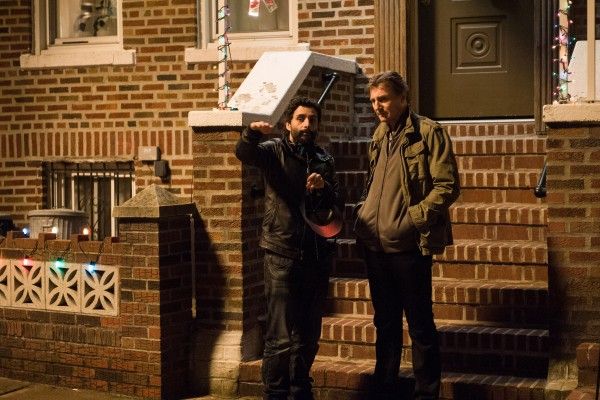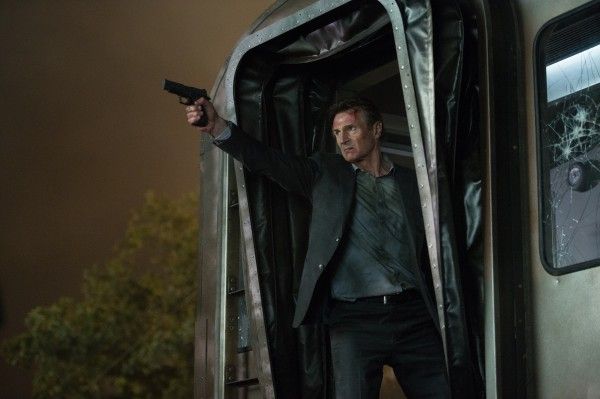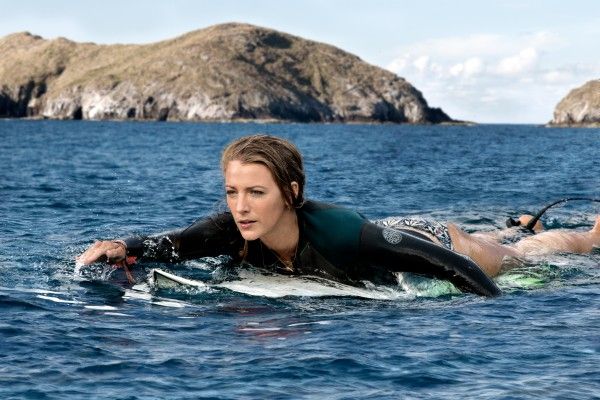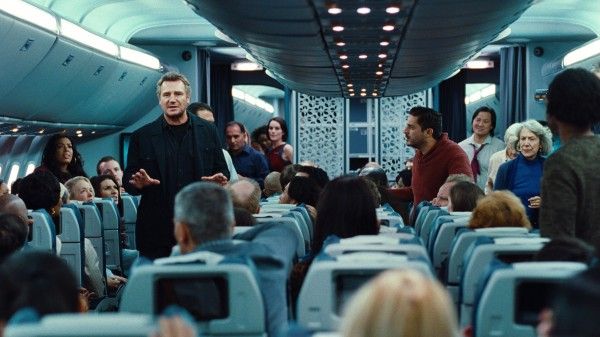There are often two stories being told in the movies of Barcelona-born filmmaker Jaume Collet-Serra, the story in the script and the story of their own making. In his remake of Andre de Toth’s House of Wax, the conceit of a case involving wax statues made with corpses remains central but instead of Vincent Price’s scarred artist getting his revenge on a greedy backer, there are twin brothers, Vincent and Bo (Brian Van Holt). Even more important, Collet-Serra uses replication as a central theme, as the brothers not only recreated the town of their youth using the dead, they made the titular attraction completely out of wax, covering up their grotesque workshop. As a symbol of the burden and joy of crafting a remake, both the house of wax and the movie on the whole are wildly expressive and often dazzling to behold. This is not something you get to say often about a movie starring Paris Hilton.
True, much of this has to do with the look of the actual house of wax, and credit is due to production designer Graham “Grace” Walker, art directors Brian Edmonds and Nicholas McCallum, and DP Stephen F Windon, who has gone onto lens Star Trek Beyond and Furious 7. Still, Collet-Serra’s House of Wax is exponentially richer than de Toth’s enjoyably malevolent romp, and his subsequent movies have largely reinforced Collet-Serra’s ability to weave elements of the personal within a recognizable and exhilarating style. That he’s been able to flourish at bigger studios than many of his contemporaries in the genre game speaks to the fact that even when he’s handed a trash script, such as in the case of Unknown and Goal II, the resulting movie still offers palpable ideas and at least a few visual thrills.
There are lasting images in House of Wax, more than a few of which are sadly sacrificed in the name of plot-based efficiency. Toward the end, a shot of a raging fire burning through wax and what’s left of flesh and blood sticks out but is quickly cut away toward another ugly overhead shot of the CGI-rendered floor of the house of wax melting away. There’s a similar tendency in Orphan, his third film, but what is lost in visual splendor is made up with a knottier and all-around tougher movie than House of Wax. Unlike so many of its ilk, Orphan’s big narrative twist wasn’t simply being built up throughout the movie. Instead, Collet-Serra and screenwriter David Leslie Johnson use the dynamic between a murderous orphan (Isabelle Fuhrman), and her adoptive parents (Peter Sarsgaard and Vera Farmiga) to contemplate the strain and pressure of living up to popularized perceptions of femininity and maternity. Fuhrman’s Esther becomes a embellished and horrific reflection of Farmiga’s character’s inner conflicts as a wife and a mother, riled into full tumult by the stillbirth of her daughter and subsequent alcoholism.
The males in Orphan are easily tricked into accepting the image that Esther projects, especially Sarsgaard’s paterfamilias. Throughout the film, Collet-Serra visually alludes to the dark subtext of indulging and rewarding treating women like dolls, most potently in a climactic reveal in black-light paint that echoes a similar rupture of the repressed in David Fincher’s The Game. The dialogue is also rife with allusions to heaving subtext, such as a flirtatious exchange between the father and a neighbor or the mother’s sparring sessions with her therapist (Margo Martindale). Collet-Serra uses familiar images of snow, streaks of blood, and mirrors to great effect but he also employs an ever-changing combination of pans, zooms, and tracking shots to give variety to the action. It also helps with the pacing. At over two hours, Orphan never drags and the thin plot never feels strained to fill time.
Sadly, that cannot be said of Unknown, the first of four movies Collet-Serra has done with Liam Neeson. Aided by an illustrious cast that includes Bruno Ganz, Frank Langella, and January Jones, Unknown nevertheless falls prey to a convoluted and confused script, one that makes the climactic twist more of a chore to piece together than the rattling revelation of an unforeseen fate. Collet-Serra certainly takes to Berlin, which he presents as a labyrinthine gauntlet of clouded memories and duplicitous agents or gunmen. He’s attentive to the world he builds, but the inner-workings are too complicated and for no particularly substantive reason, despite an awkward attempt at confronting the worldwide hunger crisis. What Unknown does do is continue a theme in Collet-Serra’s filmography of secret identities, submerged personas that begin to enflame the veneer of complicity and acceptance.
Run All Night is a mirror of that movie but features a more uncomplicated conceit. Much like with Berlin, Collet-Serra has a genuinely enthralling way of exploring the streets of New York, from the Village to Jamaica, Queens, as ex-hitman Jimmy (Neeson) protects his son (Joel Kinnaman) from his vengeful mob-boss best friend Shawn (Ed Harris). He also has a way of making the city feel like an inescapable maze, sprawling with nooks and crannies of shelter but also surprisingly small and easy to survey with money and criminal influence. Screenwriter Brad Ingelsby, who penned the similarly undervalued Out of the Furnace, does a service by creating a cornucopia of characters the reflect matters of personal and cultural history, giving juicy bit parts to Lois Smith, Boyd Holbrook, Vincent D’Onofrio, and Common along the way. And yet, it also delivers shootouts, explosions, and all the other expected pleasures of a crime thriller.
Where Collet-Serra turned Berlin and New York City into constricting traps in Run All Night and Unknown, he finds a way to expand the narrative universe of claustrophobic spaces in Non-Stop and The Commuter. One can feel Collet-Serra challenging himself in the same way Hitchcock did in The Lady Vanishes or Richard Fleischer did in The Narrow Margin in The Commuter, and Neeson admirably continues to give distinct verbal and physical characteristics to what are very similar heroes in these movies. Non-Stop does something similar on an airplane but Collet-Serra uses the rhythms of plane travel – turbulence, drink service, etc. – as an expressive element against the whodunit template of the script. Much like the mysteries and shadowy tasks that Neeson’s heroes are working against in these movies, Collet-Serra seems to be working against the confines of story and relatively lean budgets.
That’s why The Shallows comes off most clearly as Collet-Serra’s manifesto film, the clearest distillation of his working life and his artistic sensibilities. Made for $17 million and yielding a little less than $120 million globally, the story is a tale of survival and grief, in the same vein as All is Lost or 127 Hours but far more entertaining and intimate than either of those movies. Blake Lively’s surfer faces off against a humongous hungry shark in the wake of her mother passing away from cancer, which already sets up an obvious visual metaphor for the storm of emotions Lively’s character is going through and ultimately threaten to destroy her. It’s chance gifts and personal objects, feats of miraculous physicality, and pure luck that beats the path toward the surfer’s survival, much like how many scantly budgeted movies are made. For a visionary director who has worked consistently in these narrow terms, the movie’s unexpected success speaks to his mastery.
Ironically, Collet-Serra is next set to pair with Disney and Dwayne Johnson for Jungle Cruise, a movie based on the not-so-great ride. Considering the amount of money that’s been generated from Pirates of the Caribbean, also based on a Disney ride, it’s surprising it’s taken this long for the House of Mouse to take the plunge again. The selecting of Collet-Serra is in line with the company’s recent turn toward young, stylish directors with more than plot on their mind, whether it be David Lowery taking on Pete’s Dragon and Peter Pan or Alex Ross Perry’s penning the script for Marc Foster’s live-action Winnie the Pooh movie, Christopher Robin. The expanded budget means more pressure on the filmmaker to meet the producers’ oft-illogical expectations but it also means more room to experiment and play, which Collet-Serra has been overdue for receiving.

